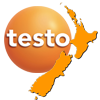
Thermal imaging cameras are a powerful and versatile tool. They have multiple applications ranging from building inspections to research and development of advanced technological components. These instruments reveal crucial information and provide vital context about temperatures and similar factors that often aren’t perceivable by the human eye or senses alone.
With the right thermal imaging instruments at your disposal, you and your staff can make more thorough and informed assessments in a simple and straightforward manner. Keep reading this post to learn more about thermal imagers, areas where they are often used and how to choose the best thermal imager for your organisation's requirements.
What are thermal imaging cameras?
Thermal imaging cameras go by many names. These names include thermographic cameras, infrared cameras and thermal imagers. Despite these various names, the intended use of these instruments is the same - to detect differences in temperature in a given area and provide a visual representation of these variations.
The key difference between traditional, conventional cameras and thermal imagers is the spectrum of light that the sensor captures. Traditional cameras record images using the spectrum of visible light, while infrared cameras only capture infrared radiation. Infrared is outside of the visual light spectrum for human eyes, so therefore infrared cameras extend this spectrum into an interpretable form.
Thermal imaging cameras are so effective in large parts because everything above the temperature of absolute zero emits infrared radiation. Modern thermal instruments have the sensitivity to represent differentiations in temperature in a visual format that makes the situation clear to users.
What Is A Thermal Imaging Camera Used For?
Thermal imagers have a wide range of functionality in both industrial and commercial sectors. At Testo NZ, we provide thermal imaging instruments that cover a wide range of uses including:
- Building thermography, to detect thermal bridges and defects.
- Building inspection, to identify potential areas of mould contamination, among other tasks.
- Quality assurance, to ensure products leaving the production line are at the expected temperature.
- Research and development, to ensure prototypes and test products stay within a safe temperature range.
- Heating engineering, to ensure heating systems work properly and identify leaks without having to conduct a direct visual inspection.
- Maintenance, to identify preventive maintenance opportunities and reduce the potential for major failures and similar issues.
Thermal imaging tools have proven themselves across the modern economy. Whether used for building wide tasks such as HVAC maintenance, or more specialised tasks such as monitoring the temperature of prototype circuit boards, thermal imagers play an important role.
What Should You Look For In A Thermal Camera?
The standards for thermal cameras vary greatly dependent on their intended purpose. There are times where a basic camera will perform consistently and effectively, such as in building inspections and maintenance. In other scenarios, a higher thermal sensitivity and resolution are required for useful results such as in research and development. This aside, there are still some basic specifications that every thermal imaging camera should offer.
- Minimum resolution of 160 x 120 pixels.
- Thermal sensitivity less than 120 millikelvins — meaning visualisations of temperature differences as slight as 0.12 C.
- Intuitive, simple controls
Further factors that don’t relate directly to the operation of the camera itself that should be considered are features such as information being able to be shared by others. Modern thermal imaging tools also offer software that make analysis and reporting a more streamlined affair.
What thermal camera options are available from Testo?
Testo NZ provides businesses with a variety of thermal imaging instruments designed to meet specific needs. Broadly, our range of thermal imaging solutions break down into three main categories.
- Basic, sturdy and reliable thermal imagers, perfect for applications like building inspections.
- Professional-grade thermal imagers.
- High-end thermal imagers.

